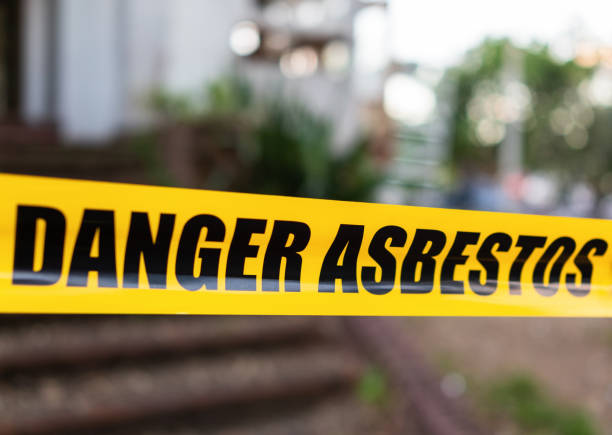What Is Asbestos? Types, Risks and Safety Tips
For many years, asbestos was commonly used in a wide variety of construction materials across the building industry. Despite offering a range of desirable properties, asbestos poses a serious health risk.
Although asbestos was banned in Australia in December 2003, its legacy continues to affect home and business owners today. With this in mind, it can often help to have a better understanding of what exactly you’re dealing with before you get stuck into your next restoration or renovation project.
Read on to learn more about asbestos, from its history through to Australia’s strict asbestos regulations.
A brief history of asbestos
While Australia’s asbestos bans are still relatively new, asbestos has been used for thousands of years throughout history. In fact, some of the earliest examples date back to ancient Greece, where it was used to strengthen pottery.
During the Industrial Revolution, asbestos use boomed as it was quickly adopted in the construction, shipping and manufacturing industries. As a naturally occurring mineral, asbestos was easy and cheap to come by. Plus, it also offered resistance to fire, electricity and chemical corrosion, making it a highly desirable compound for use in building and construction materials.
Asbestos was first used in Australia in the 1880s and quickly gained popularity, leading to a sharp increase in asbestos mines and milling operations around the country. Ultimately, asbestos was commonly used to strengthen a range of materials, including:
- Cement or fibro sheeting,
- Drainage and flue pipes,
- Roofing, guttering and flexible building boards,
- Floor tiles, vinyl floor coverings
- Construction adhesives and glues
- Clutch and brake linings,
- Home roof insulation materials, and
- Textiles.
It was during this time that the first wave of asbestos-related illness and death impacted industrial workers who were exposed to high levels of the material. Still, it wasn’t until December 2003 that asbestos was banned entirely in Australia.
Types of asbestos
Chances are you’ve heard of asbestos, but are you familiar with the different types of asbestos? As it turns out, there are six types of asbestos, each of which offers different purposes and uses:
- Chrysotile (white asbestos): The most common form of asbestos, chrysotile is often used in construction materials and automotive parts.
- Amosite (brown asbestos): Characterised by shorter, straighter fibres compared to other types of asbestos, amosite is used in a range of products from ceiling tiles to gaskets.
- Crocidolite (blue asbestos): One of the most dangerous types of asbestos, crocidolite is commonly found in construction materials.
- Tremolite: This type of asbestos offers higher heat-resistant properties, so it’s often used for insulation, roof tiles and plumbing.
- Anthophyllite: Not as common as other types of asbestos. Anthophyllite was commonly used in cement and insulation.
- Actinolite: Less flexible compared to other types of asbestos and typically used in cement and insulation.
These six types of asbestos are usually categorised into one of two categories:
- Friable asbestos: Friable asbestos can be easily crushed to make a powder, meaning it has a greater chance of becoming airborne when handled.
- Non-friable or bonded asbestos: Bonded asbestos is typically mixed with cement, resin or other bonding materials to keep the fibres in place. This type of asbestos poses less risk to your health, but there’s a chance it can release airborne particles if damaged.
Health risks of asbestos
The danger of asbestos lies in its fibres. Asbestos fibres are between 50 to 200 times finer than a human hair, making them invisible to the naked eye and easily inhalable. When inhaled, these fibres can become trapped in your lungs, damaging the delicate lung tissue and causing several severe respiratory diseases like lung cancer, mesothelioma and asbestosis. However, these symptoms generally don’t appear until 20 to 30 years after prolonged exposure to high levels of asbestos fibres.
It’s worth noting that asbestos only becomes a risk when the materials are disturbed, and the fibres are released into the air. If you live in a house or work in a building that’s made from intact asbestos materials, you’re not at risk.
Understanding Australia’s asbestos regulations
As of December 2003, asbestos has been banned in Australia, making it illegal to make, import or use asbestos due to its serious health risks. Australia has robust regulations for managing asbestos that aims to prevent exposure and ensure safe handling, removal and disposal of ACM. The national asbestos regulation is shaped by:
- Work Health and Safety (WHS) Act and Regulations 2011: Details how asbestos must be managed in workplaces.
- Code of Practice: How to Safely Remove Asbestos (Safe Work Australia): Provides detailed guidelines for asbestos identification, risk management, and removal procedures.
- Australian Border Force (ABF): Ensures no ACM are imported.
In Queensland, asbestos removal must be completed in line with WHS regulation. Most cases of asbestos removal require a licensed professional to complete the removal work. These licensing requirements are in place to ensure asbestos removal and disposal is completed in line with regulatory requirements, preventing exposure to toxic asbestos fibres.
Detecting and removing asbestos
At Adios Asbestos, we offer complete asbestos management services from identification through to removal and certification. Detecting asbestos starts with comprehensive asbestos testing to analyse the materials and identify the presence of asbestos. By testing ACM, we’re able to identify and mitigate the risks that come with handling asbestos to ensure the safety of your home or workplace.
Once the samples have been collected, they’re sent to an accredited laboratory for analysis to detect the presence of asbestos fibres. From here, you’ll be provided with a comprehensive report detailing the findings, so you can make an informed decision about your property. The report details the location and type of asbestos, along with suggested actions for managing or removing them.
If you decide to go ahead with asbestos removal, the Adios Asbestos team is licensed and trained to remove asbestos in line with safety regulations and industry standards. We use the latest techniques and technologies to isolate affected areas, minimise disruption and dispose of contaminated materials at certified facilities.
Once the removal is complete, we’ll thoroughly clean and decontaminate the area, and (if your works are over 10m2) provide you with a certification confirming that the working area is asbestos-free.
Call Adios Asbestos for all your asbestos removal needs
Whether you’re looking to renovate or you’ve found disturbed asbestos at your home, it’s important to leave asbestos removal to the professionals. At Adios Asbestos, we offer free advice, free quotes and a price beat guarantee. Get in touch with the team today and you’ll be saying adios to your asbestos in no time.

